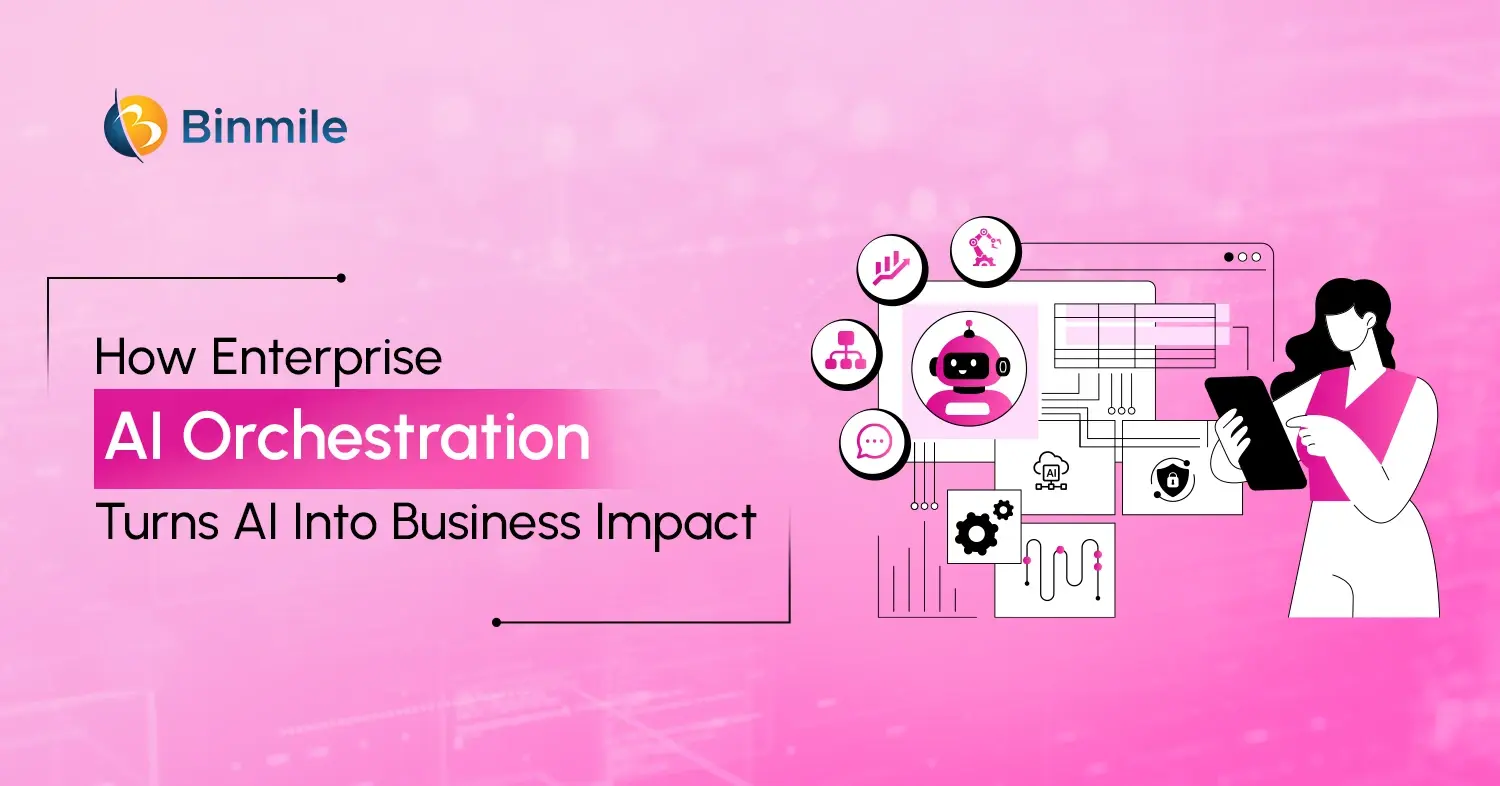- Ai in network industries
- ai in telecom sector
- GenAI revolution in Telecom
- generative ai for telecom
- Generative AI use cases in telecom
- generative AI vs AI
- Impact of Generative AI on Telecom
- latest trends of GenAI on Telecom
- role of ai in telecommunications
- telecom industry future
- trends of generative AI in the telecom industry
- What is generative AI in telecommunications?
The advent of emerging technologies such as 5G technology, ML/artificial intelligence, and IoT, among others, in telecommunications has brought rapid transformation. However, the integration of generative AI in the telecom industry has empowered telecom providers to optimize operations and enhance user experiences. A recent survey revealed that the use of GenAI in the telco industry is expected to increase from 19% to 48% within the next two years. It has already been established that generative artificial intelligence will transform customer care, IT, network optimization, and digital labor, leveraging AI automation tools and predictive analytics to enhance agility, accuracy, and efficiency. So, as a potent subset of AI, what can generative AI do for telecommunications?
But first things first. What is generative AI in telecommunications? Generative artificial intelligence is an AI technology that can create new content and ideas, including conversations, stories, images, videos, and music. Is it any different from the AI we’ve been using in the past? You may ask. Additionally, how does generative AI transform the deployment, management, operation, and improvement of telecom networks and businesses? If you’re also wondering about these questions, then this blog is for you. We’ll explore 5 use cases wherein the generative AI could have the most impact. Additionally, this blog will also shed light on the trends of generative AI in the telecom industry and its future outlook.
Harnessing the Power of Generative AI in the Telecom Industry
What is generative AI vs AI? Are they the same?

It’s a question that will bog you, after all, Generative AI is Artificial Intelligence, isn’t it? It is, but it’s also more than that. Normal AI or Traditional AI is trained on large data sets with human input, conversations, user queries, and responses, while Generative AI is trained on different sets of data to learn patterns to create content with predictive patterns. Unlike AI, which follows a simple input and output process, GenAI takes the input, understands it, and creates something new using the information from the input.
There’s been no question that the telecommunications industry is highly dynamic and undergoing continuous expansion to meet the ever-evolving needs of consumers and businesses alike. Amidst that, the rise of generative AI is set to bring a transformative trend that has the potential to redefine the landscape of communication and connectivity.
Gen AI use cases in the Telecommunications industry;
- Behavior simulation
- Content personalization
- Natural voice generation
- Network optimization
- Predictive maintenance
- Fraud detection using machine learning
How does it matter in the telecommunications industry? We’re about to find that out.
Generative AI in Telecom: 5 Breakthrough Applications Driving the Future
The advent of generative artificial intelligence in the telecommunications industry has started a transformative era, bringing in unparalleled efficiency, customer experience, and innovation. Let’s understand how it happens by exploring 5 ways generative AI in telecom acts as a catalyst for change in the industry.

1. Dynamic Networks Optimization
Leveraging Generative Artificial Intelligence in the telecom industry has offered network optimization for unparalleled efficiency. This happened due to machine learning and subsequent autonomous analysis of data patterns. Further, predictive identification of potential bottlenecks and resource optimization allocation. Thus, generative AI is a robust tool for independent management to ensure peak efficiency in networks. This not only provides general performance but also minimizes off-hours and, as a result, enhances a more resilient and reliable telecommunication infrastructure.
2. Customer Service Redefined With AI-Powered Chatbot
The adoption of generative AI-powered chatbots is set to revolutionize the domain of customer service in the field of telecommunications. These smart virtual assistants respond to the inquiries of customers immediately and on their behalf, based on random data. This eases customer satisfaction and keeps human agents spending time on their intricate tasks, including focusing on large-scale personalized service, making it a viable balance between automation and one-to-one service.
3. Predictive Maintenance to Minimize Service Disruptions
In the language of modern AI, telecom providers can unlock using Generative AI predictive maintenance – a real revolutionary approach from reactive business to proactive methods. With its help, the historical data can be analyzed for patterns that would inform the predicted probable failures of equipment to make a timely intervention. This minimizes service downtime and also helps to cut back the costs of running operations resulting from reactive maintenance.
4. Preventive Measures to Mitigate Threats in Cybersecurity
Since the telecom industry is frequently vulnerable to cyber threats, the preventive measures adopted by generative AI solutions reinforce defenses. GenAI tracks changes in customer behaviors and threats by adapting to emerging risks as cybersecurity evolves. In that way, it enhances the posture of a telecommunications company not only for protection but primarily for preventive measures against loss of its clients’ sensitive data on top of the integrity of the network’s communication.
5. Data-Driven Strategy Enacted By Data Analytics
Generative Artificial Intelligence in telecom provides telcos with detailed and robust data analytics features. By uncovering high-value pieces of information through massive datasets, AI helps to rightfully define growing and emerging trends on which smart decision-making processes are built. Generative AI technology helps predict future trends in the telecom market and equips them with the generative AI tools necessary to identify innovative solutions. Thus, making the telecom industry data-driven and fostering a culture of continuous improvement & adaptability.
Tired of outdated telecom systems holding you back? Embrace AI-driven solutions to optimize operations, enhance user experiences, and transform your business.
Future of Generative AI in the Telecom Industry: What to Expect Next
The future of generative AI in the telecom industry is witnessing an upward trend with an estimated market size of USD 302.34 million in 2024. It’s projected to experience a CAGR of 41.59% from 2024 to 2032 and will reach the value of USD 9,790.87 million by 2034. This reflects the increasing significance and widespread acceptance of generative AI in telecommunications.

This is what the future of Generative AI in the Telecom Industry looks like
- Power saving with AI will allow telcos to reduce their carbon footprint, lower operational costs, and contribute to a more sustainable future
- Telcos can analyze and make sense of massive datasets for enhanced operations and boost customer experience with AI and IoT connectivity
- MLOps and No Code are transforming not only to let telecom companies operate efficiently, but also to take center stage in innovation and being competitive
- Generative AI-enhanced mobile tower operation optimization
Looking to innovate with Generative AI? Partner with us for expert consulting services. Create a smarter, connected future—contact us today!
Real-World Applications of Generative AI in Telecom
Global telecom giants are no longer testing GenAI—they’re scaling it. From smarter support systems to predictive analytics, these real-world examples reveal how generative AI is delivering tangible gains in efficiency, personalization, and network reliability.
- Vodafone has partnered with Microsoft to bring generative AI into customer service. Its AI-powered chatbot TOBi now handles 60%+ of customer queries autonomously across multiple markets, reducing human workload and improving resolution time.
- AT&T is using generative AI to streamline internal operations, predict network outages, and proactively alert customers about disruptions. The result: fewer complaints and improved uptime.
- Reliance Jio is investing in AI-led network automation to enhance real-time decision-making and predictive maintenance across its extensive infrastructure.
- Verizon has integrated GenAI into its fraud detection systems, leveraging behavioral analytics to flag anomalies faster and more accurately, saving millions in potential fraud losses.
Closing Statement: Generative AI in Telecom
We have explored how generative AI in the telecom industry is bringing tremendous opportunities to not only drive transformation but also streamline the way it operates. From optimizing networks to revolutionizing customer service and fortifying cybersecurity, the impacts of generative AI are far-reaching. With the help of generative AI, telecom companies are not only set to enhance their operational efficiency but also redefine the very core of how they engage with customers.
In this blog, we explained how the integration of generative artificial intelligence for telecom is reshaping the industry and also discussed what to expect from this transformative technology. Hopefully, it has widened your understanding of the immense power generative AI holds. Further, as it grows eventually, we can expect to see more and more telecoms adopt generative AI capabilities. The future of telecom belongs to those who harness the power of generative AI, wherein an AI app development services company can help you innovate, adapt, and lead in this dynamic and ever-evolving industry.
Frequently Asked Questions
The telecom industry future is closely tied to digital transformation, with AI-driven automation, real-time analytics, and generative AI models reshaping customer experience, network management, and service delivery. The future promises more intelligent, adaptive, and cost-efficient telecom operations.
- Key drivers include the growing adoption of AI solutions in various telecom applications, the rising number of AI-enabled smartphones, and the advent of 5G technology.
- Key restraints include incompatibility between telecommunication systems and AI technology, the unreliability of artificial intelligence algorithms, and the lack of skilled workforce
Network industries are sectors where the value of a product or service increases as more people use it—such as electricity, transportation, and telecommunications. The telecom sector is a prime example, as its infrastructure and services depend on interconnected networks that benefit from scale and shared usage.
The role of AI in telecommunications includes optimizing network performance, detecting fraud, predicting maintenance needs, and enhancing user experiences. AI helps telecom companies manage complex data flows and deliver seamless connectivity with minimal human intervention.
AI in the telecom sector is used for predictive maintenance, automated troubleshooting, network traffic optimization, and intelligent customer interactions. These applications reduce operational costs and improve uptime and service quality across the board.









